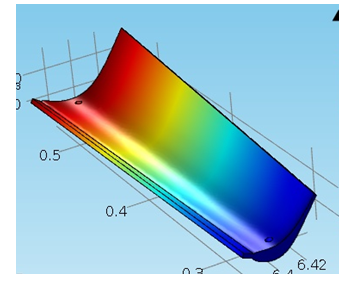Residual Stress and Distortion – Ceramic Matrix Composites
Now that we have the analysis formulated to address the issues associated with fluid flow, reaction and thermal history the approach can be extended to predict the development of residual stresses and resulting component distortion in the final component. The residual stress generated during processing was calculated using the integrated solid mechanics solution capabilities to solve the equilibrium equation:
with the following constitutive relation:
where: is the elastic tensor and
is the elastic strain.
Elastic strain is defined by the following set of relations:
This approach treats the residual stresses at the continuum level based on any constraint that is applied to the fixtures during manufacturing and not at the constituent level of the individual ply layers. The mechanical properties a must be treated to reflect the changes that occur with temperature to the point that volumes of liquid cannot bear any load. When correctly integrated into the analytical routines prediction of the distribution residual stresses and the resulting component distortion can be made, see Figure 7.

The final two blogs in this series will consider how to integrate the functionality into a unified tool that can be used by engineers who are not experts in multiphysics computational analysis.
